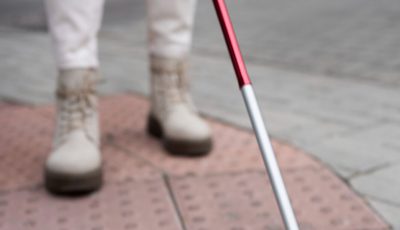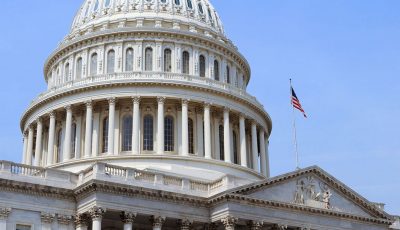Interior provides $635,885 for Micronesia region
WASHINGTON, D.C.—Acting Interior assistant secretary for Insular Areas Nikolao Pula has made available $635,885 for natural and cultural resource protection for all U.S. island jurisdictions in the Micronesia region.
“It is reassuring to see the range of initiatives we have been able to support with this funding, from managing fisheries that support people’s livelihoods to suppressing the impacts of the damaging coconut rhinoceros beetle and little fire ant,” said Pula. “We are happy to support and bolster the collaborative efforts of conservation-minded leaders across the Micronesia region.”
The Nature Conservancy Micronesia will receive $93,600 to pilot a community-based fisheries management program on Oneisomw Island in the Chuuk Lagoon.
Chuuk has only 2 percent of its marine resources designated as no-take areas, the lowest among the four states in the Federated States of Micronesia.
Chuuk has suffered from challenges such as overfishing, land-based pollution, the lack of a statewide approach to management, and a lack of capacity for resource planning.
This project is in line with the Micronesia Challenge, a shared commitment by the chief executives of Guam, the CNMI, FSM, the Marshall Islands, and Palau to effectively conserve at least 30 percent of near-shore marine and 20 percent of terrestrial resources across the Micronesia region by 2020, and shared recognition that the future of the islands depends on the viability of their marine and terrestrial environments.
The Micronesia Conservation Trust will receive $127,400 to fund the participation of one conservation officer from each of the Micronesian island jurisdictions in the Micronesia Challenge to participate in the first course scheduled for 2017 at the Marine-Terrestrial Conservation Enforcement Academy at the Guam Community College.
Through this MCT-GCC collaboration conservation officers across the region will be trained in safety procedures and how to approach and apprehend alleged violators as well as prepare reports that can stand up in court.
The MCT, which serves as the financing mechanism for the Micronesia Challenge Endowment Fund, supports biodiversity conservation and sustainable development for the people of FSM, Palau, the Marshall Islands, and the U.S. territories of Guam and the CNMI.
“We at the Micronesia Conservation Trust appreciate the trust and confidence that the Office of Insular Affairs has placed in us by providing this funding,” said Willy Kostka, MCT executive director. “We have been able to secure matching funds—$15,000 from the FSM Congress, $25,000 from the [U.S. Agency for International Development] Climate Ready Project, and $40,000 from the U.S. Forest Service—and can now train more than one person per jurisdiction.”
The first course began on Monday, July 24, with 16 participants and ends on Oct. 4.
Ridge to Reefs, a non-profit organization, is granted $100,000 to work with the Belau Watershed Alliance, the Palau Conservation Society, and other local and community partners in Palau to address increases in growth and development around the main island of Babeldaob since completion of the circumferential Compact Road.
Stakeholders are expected to address concerns such as soil erosion and sediment transport impacting the coasts and coral reefs, degraded savannahs, and impacts of unsustainable agricultural practices.
The University of Guam will also receive $176,553 to fund a post-doctoral entomologist for two years and supplement existing work to administer Oryctes nudivirus, the biological control agent of choice against the coconut rhinoceros beetle, Oryctes rhinoceros. This has typically reduced damage by up to 90 percent, with population suppression lasting indefinitely. The coconut rhinoceros beetle has been rapidly killing coconut trees in Guam and Palau.
Ideal breeding sites are in decaying vegetation, often left in the wake of tropical storms and typhoons.
Without significant suppression, it is believed both Guam and Palau will lose most of their coconut trees and that it will only be a matter of time before other islands in Micronesia are invaded.
The University of Guam College of Natural and Applied Sciences will receive $63,816 to purchase supplies and equipment necessary to eradicate the little fire ant, Wasmannia auropunctata, from selected forest sites in Guam using techniques adapted from successful mitigation projects in Hawaii.
In cooperation with the UOG Cooperative Extension Services, entomologists will also train technical workers to recognize and control little fire ant infestations.
Guam’s Department of Agriculture will receive $74,516 to start up a training and outreach program for the prevention, control and management of the little fire ant infestation on Guam.
Funds will provide for equipment and supplies, personnel training, a new website dedicated to little fire ant control, and workshops to encourage and engage the public in the control and management of this pest.
A little fire ant infestation was first found at a green-waste site on the northern tip of Guam in 2011, and there are now over 20 widely dispersed infestation sites on the island.
Other infestations of the little fire ant have been found in Hawaii and other islands of Polynesia further south, including Australia.
The little fire ant has caused ecological disruption in Guam’s forests and other areas on Guam.
It is feared that if unchecked, the little fire ant will cause further disruptions to Guam’s ecosystem and spread to other islands in Micronesia.
These three initiatives support efforts to control the coconut rhinoceros beetle and the little fire ant and align with the 2015 Biosecurity Plan for Hawaii and Micronesia.
These two invasive species pose significant challenges to regional ecosystems and present both health and economic risks to communities in the Pacific.
These specific initiatives were able to be funded because a one-time appropriation add-on of $250,000 made available by Congress in the fiscal year 2017 budget toward these eradication efforts and to augment capacity building within the insular areas in the management of natural and cultural resources.
At the 22nd Micronesian Islands Forum in May 2017, island leaders, including Guam Gov. Eddie Calvo, identified invasive species and specifically the coconut rhinoceros beetle, as one of the most important threats to island communities, economics, environments and human health.
All funding for cultural and natural resources protection and management was provided under what was formerly called the Coral Reef Initiative. All four U.S. territories of the U.S. Virgin Islands, American Samoa, Guam, and the CNMI, as well as the three freely associated states of the FSM, the Marshall Islands, and Palau are eligible to apply.
Discretionary funding provided by the Office of Insular Affairs in the Department of the Interior is appropriated annually by the U.S. Congress to help address needs in the U.S. insular areas. (DOI)



























